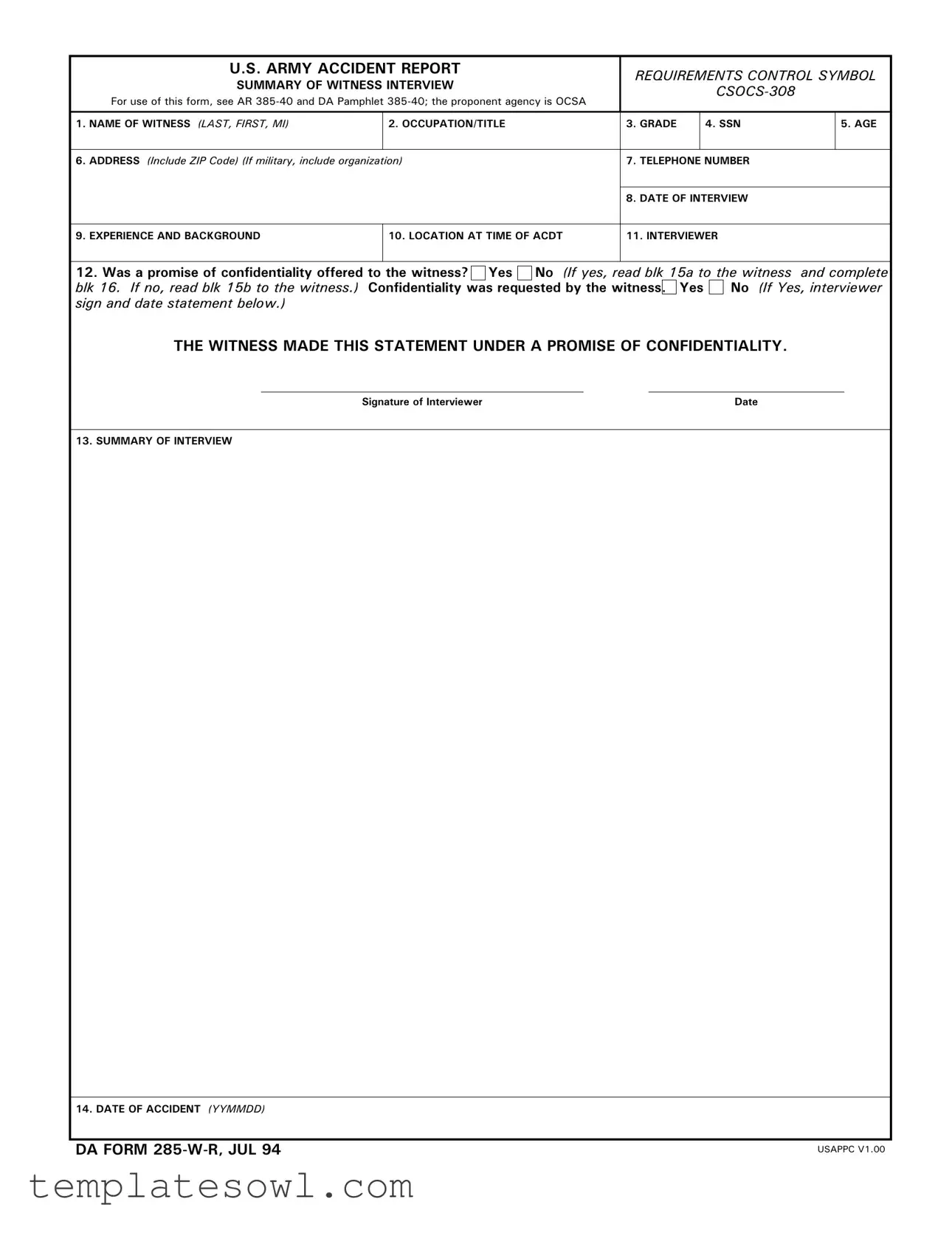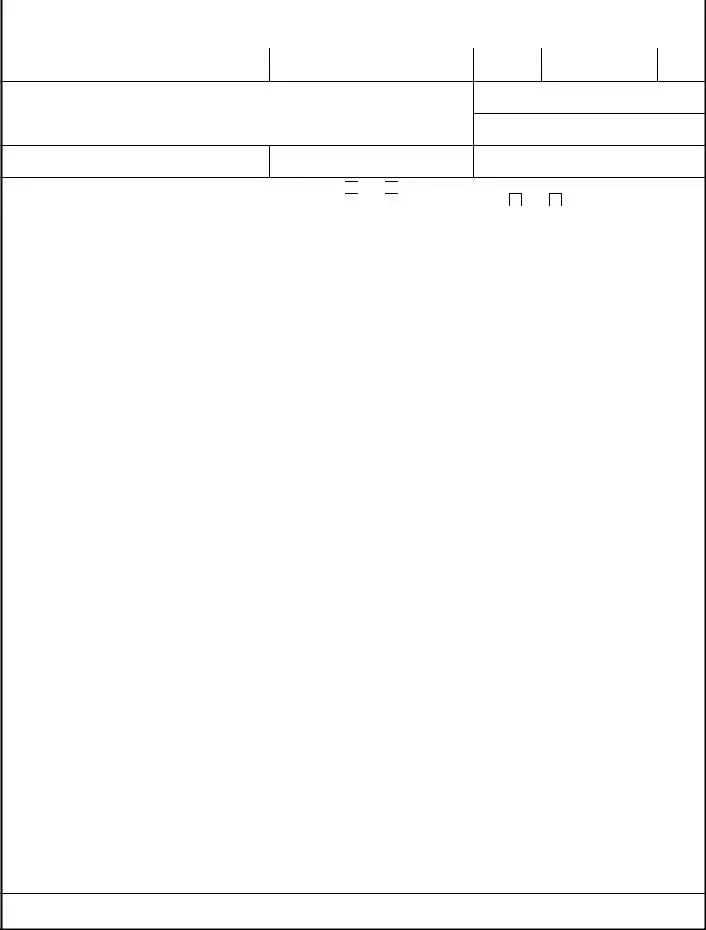What is the purpose of the DA 285 W R form?
The DA 285 W R form serves as an Accident Report that is mandatory for documenting witness interviews during military accident investigations. It is part of the Army's commitment to ensure safety and prevent future incidents. By gathering information from witnesses, the Army can analyze circumstances surrounding accidents and improve safety measures.
Who is required to fill out the DA 285 W R form?
The form is typically filled out by the interviewer conducting the witness interview, but it also requires input from the witness themselves. Witnesses may include any personnel who were present at the scene of an accident or who have relevant knowledge regarding the events that occurred. Their statements are crucial for a comprehensive investigation.
What information is needed from the witness on this form?
Witnesses must provide personal details such as their name, occupation, age, and contact information. Additionally, they are asked about their experience and background, their location during the accident, and the date of the interview. This data helps to establish context and the qualifications of the witness, enhancing the reliability of the information provided.
Is confidentiality offered to witnesses during the interview process?
Yes, confidentiality can be offered to witnesses. The interviewer must inform the witness about the potential for confidentiality and seek their preference. If a promise of confidentiality is agreed upon, the details shared during the interview will be kept from public release under the Freedom of Information Act, thus protecting sensitive information from being disclosed outside military channels.
Can the statements given in the interview be used for disciplinary action?
No, statements provided during the interview are intended solely for safety investigation and accident prevention purposes. They cannot be utilized for any administrative or disciplinary proceedings against individuals. This provision ensures that witnesses can speak freely without fear of repercussions, thereby promoting a more accurate and complete account of what happened.
What happens to the results of the interview?
The results of the interview, along with the general findings from the investigation, will be reviewed by the military chain of command. While necessary for internal safety evaluations, summaries from these interviews might be released publicly unless confidentiality was promised to the witness. This balance allows for transparency while protecting the informants' interests.
How can a witness ensure their interview remains confidential?
A witness must explicitly request a promise of confidentiality when being interviewed. This can be indicated by completing the relevant section on the form. If the witness decides not to request confidentiality, their statements may be subject to public release under the Freedom of Information Act. Understanding these options is essential for maintaining control over the information shared during the interview.



 Yes
Yes 
 No
No 